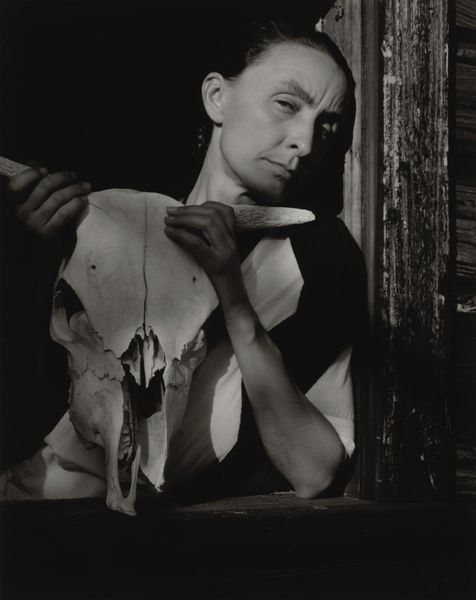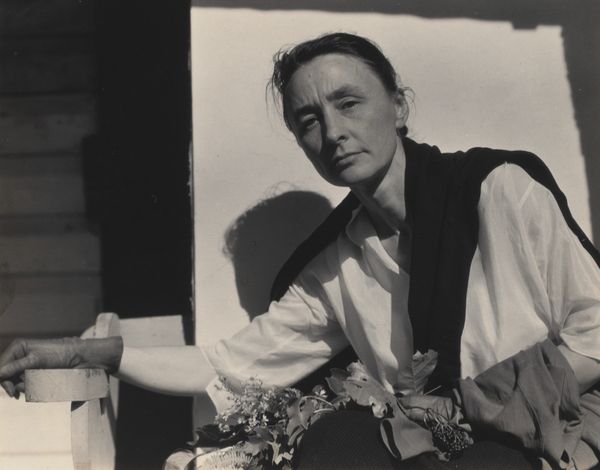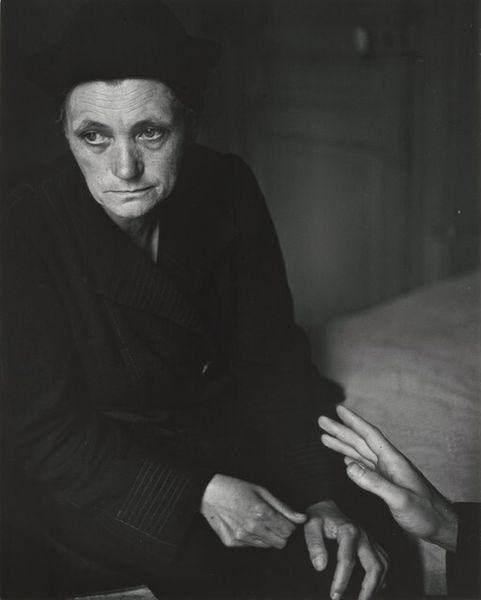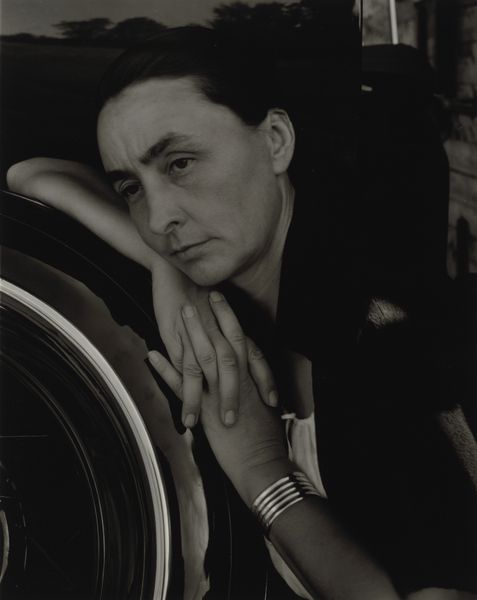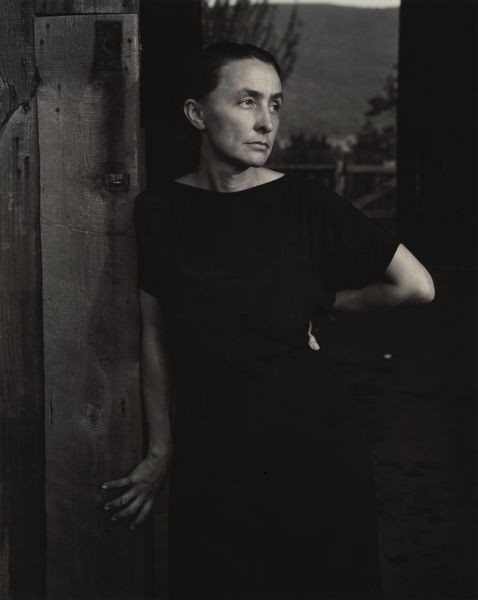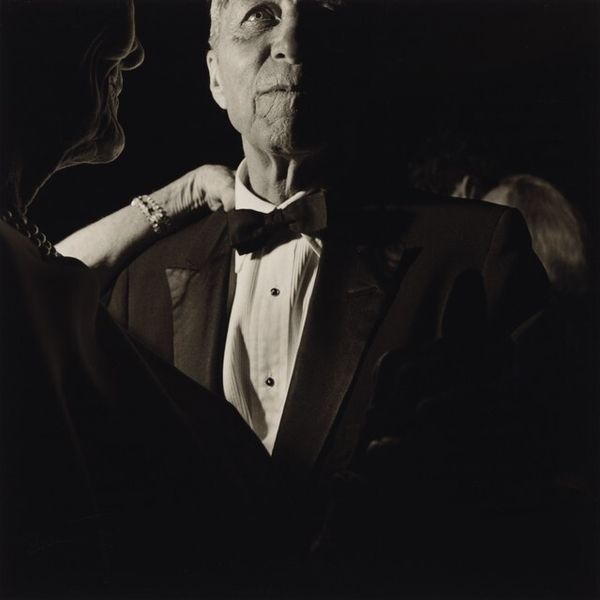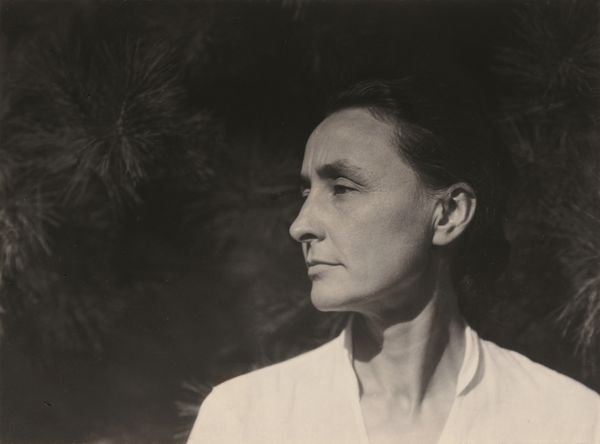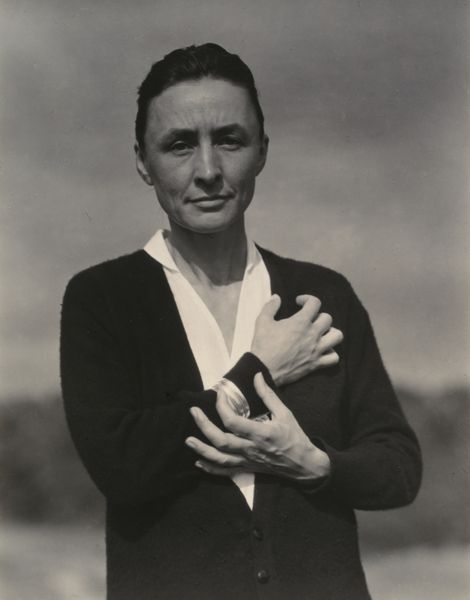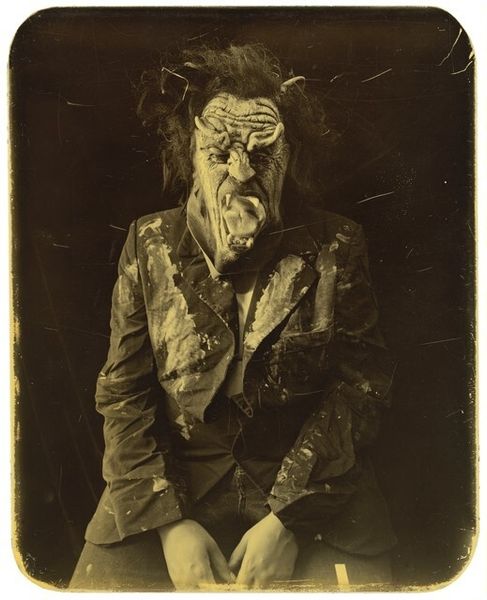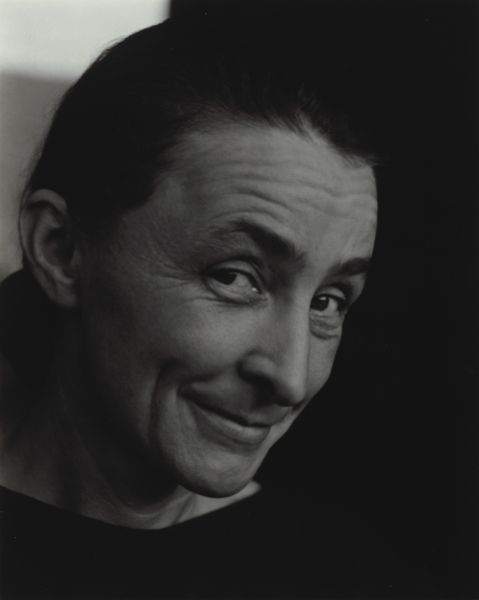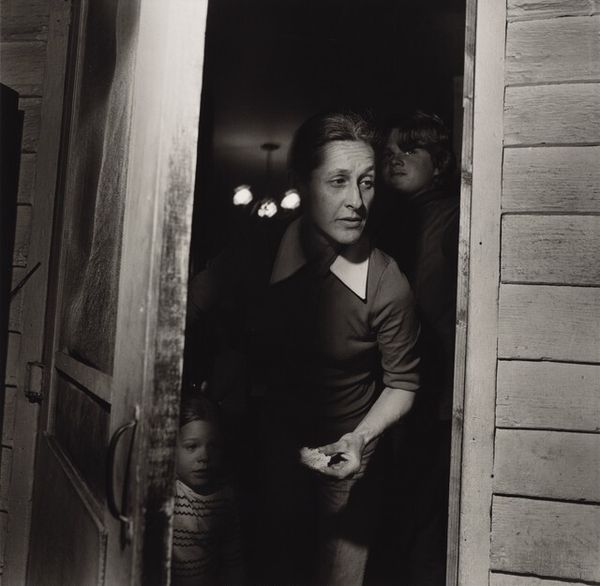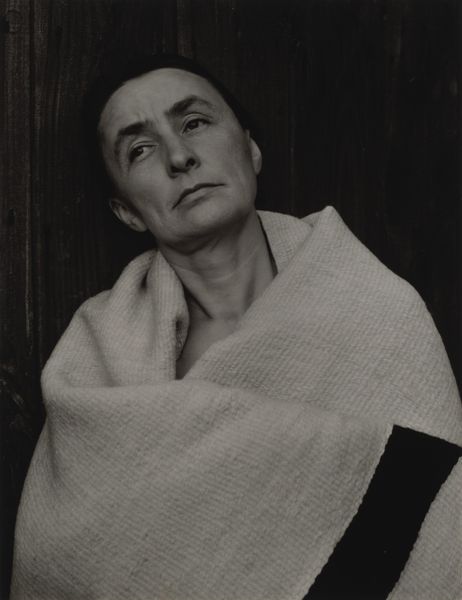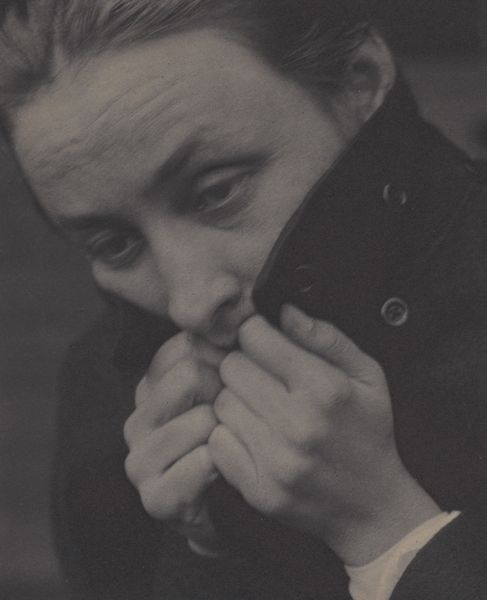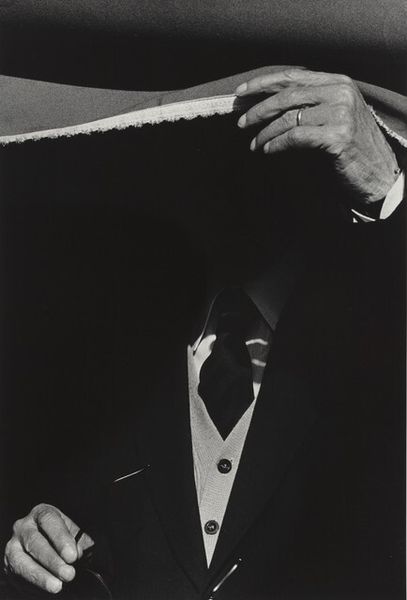
photography, gelatin-silver-print
#
portrait
#
still-life-photography
#
black and white photography
#
pictorialism
#
photography
#
historical photography
#
black and white
#
gelatin-silver-print
#
monochrome photography
#
monochrome
#
monochrome
Dimensions: sheet (trimmed to image): 24 x 19 cm (9 7/16 x 7 1/2 in.) mount: 56.5 x 43.8 cm (22 1/4 x 17 1/4 in.)
Copyright: National Gallery of Art: CC0 1.0
Curator: Here we have a photograph by Alfred Stieglitz, taken in 1931. The subject is Georgia O’Keeffe, and it's simply titled “Georgia O'Keeffe." Editor: The mood is somber, wouldn’t you say? It’s a portrait in gelatin silver print, mostly grayscale. O'Keeffe’s holding this enormous bleached skull, like a memento mori… It has a real visual and tactile heaviness. Curator: It's interesting you mention 'heaviness', considering it's a photograph; that Stieglitz captures that feeling really comes down to his manipulation of light and shadow. We're meant to confront our mortality through this lens of O'Keeffe, a creative force herself, embracing the cyclical nature of existence. I also wonder what the labor implications of making the physical photograph would have meant for Stieglitz and his studio? Editor: Precisely, there's the stark contrast between life and death made raw through the tangible craft. What kind of chemicals went into its creation? Also consider O'Keeffe’s choice to pose with it: The skull, presented almost as an artisanal object itself, contrasts O'Keeffe's stark clothes: Who made her blouse and who profited from the production of textiles and photograph? Curator: A keen observation. Think of O'Keeffe and her deliberate curation of self. And you know, Stieglitz adored her, body and spirit and intellect, but perhaps most her capability of being entirely herself. The skull here? Another artifact in her visual vocabulary. It speaks of desert landscapes, her fascination with the Southwest...bones bleached under sun… Editor: That deliberate presentation speaks to the commodification, in a sense, of the “artist’s life.” The labor behind creating that public image–both theirs. What materials do we see represented and unrepresented? How are those objects given significance through photographic production? Curator: Yes, and also about resilience! Finding stark beauty and turning something starkly...final into something beautiful. Something she could turn into her language... What resonates now in particular for me is how both O’Keeffe and Stieglitz so bravely forged their own unique creative and life paths, smashing what society thought was appropriate and conventional! Editor: Perhaps understanding art's place inside material conditions lets us also face beauty without flinching. It encourages to examine not only intention, but implication too.
Comments
No comments
Be the first to comment and join the conversation on the ultimate creative platform.
